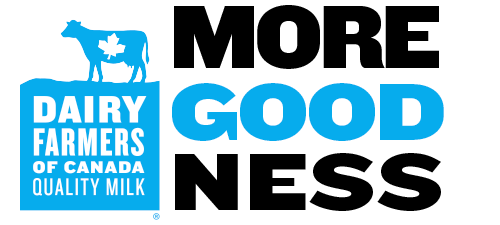Highlights
- Reaching “zero” will be done through emissions reduction and GHG removal offsets. Other strategies will include qualitative targets related to soil and land, water, biodiversity, waste, and energy.
- This is a continuation of the ongoing efforts by the dairy industry related to environmental stewardship and much of the work necessary to meet the target has already begun.
February 2, 2022 (Ottawa) – Today Dairy Farmers of Canada (DFC) unveiled a goal to reach net-zero greenhouse gas (GHG) emissions from farm-level dairy production by the year 2050, with a milestone in 2030.
This is a continuation of the ongoing efforts by the dairy industry related to environmental stewardship and much of the work necessary to meet the target has already begun. For example, from 1990 to 2019, Canadian dairy farmers reduced the carbon footprint of milk production by 24 per cent through improved management practices.
“For generations now, Canadian dairy farmers have been stewards of the land, adapting their practices based on science and innovation,” says Pierre Lampron, President, Dairy Farmers of Canada. “Our leadership in the area of sustainability is already recognized internationally, as we have one of the lowest carbon footprints per litre of milk produced.”
This goal not only aligns with the Government of Canada’s goal of net-zero GHG emissions by 2050, but international commitments, as well. The Paris Agreement, for instance, aims to foster climate resilience and lower greenhouse gas development, as well as to make climate flows consistent with a pathway toward a lower carbon future. Last fall, DFC joined 11 of the world’s largest dairy organizations in supporting Pathways to Dairy Net Zero, a Global Dairy Platform-sponsored commitment towards net-zero GHG emissions.
“A global effort is underway to cut emissions and reduce the direct costs of climate change on our health, our environment and our economy,” says Steven Guilbeault, the federal Minister of Environment and Climate Change. “Every economic sector and every region needs to step up to reduce emissions. The Dairy Farmers of Canada’s commitment to achieving net-zero shows important leadership and our Government will continue to support our collective efforts to get there.”
“The Federal government set the objective, but can only achieve it with the support of industry partners,” Lampron added. “Achieving this objective will require dairy farmers to adapt, but will also require that effective government supports are in place.”
Reaching “zero” will be done through emissions reduction and GHG removal offsets. Other strategies will include qualitative targets related to soil and land, water, biodiversity, waste, and energy.
“We have committed to an objective, we have key strategies, and now we will further engage with our dairy farmers in the development of the basket of initiatives from which producers can choose to move the dial on sustainability, while respecting the uniqueness of each farm,” concluded Lampron.




